- Home
- J. R. R. Tolkien
The Story of Kullervo Page 13
The Story of Kullervo Read online
Page 13
Fifth, his weapons. Like his Kalevala counterpart, Tolkien’s Kullervo has both a knife and a sword. In Kalevala Kullervo laments the breaking of his knife, ‘this iron ... heirloom from my father’ (Runo XXXIII ll. 92–93), and explains to the smith’s wife while she is being gnawed by bears and wolves that this is her punishment for causing him to break his knife. In Tolkien’s story the knife has a greater history. It is given to the infant Kullervo when his mother first tells him of the Death of Kalervo (capitalized as if it were a story in itself). It is described as ‘a great knife curiously wrought’ that his mother had ‘caught from the wall’ when Untamo descended on the homestead, but had no chance to use, so swift was the attack. The knife has a name, Sikki, and is instrumental (together with the hair of Musti) in saving Kullervo from being hanged. It is this knife with which the boy carves pictures on the tree, wolves and bears and a huge hound, as well as great fish said to be ‘Kalervo’s sign of old’. The breaking of his knife on the stone in the cake causes Kullervo to lament its loss in verse, addressing the knife by name, calling it his only comrade and ‘thou iron of Kalervo’. The sword makes its appearance late in the story, after Kullervo has met Wanōna again, and their tragedy has taken place. He takes the sword to kill Untamo, and makes it the willing instrument of his own death.
Sixth, the incest, which is the story’s emotional climax. As noted above, in Kalevala this episode is a conflation of disparate runos from the far east of Finland, from Ingria, Karelia, and Archangel, and featuring different heroes with different names. Lönnrot smoothed the edges and regularized the hero’s name to conform to the existing runos in his compilation. His Kullervo, on his way home after paying the taxes, accosts a succession of girls, inviting each into his sleigh. The third girl is the one who accepts, and theirs is a brief encounter quickly followed by the exchange of family information revealing the incest, and leading to her suicide. The scene is potentially tragic, but handled so quickly and tersely that it’s over almost before you know it.
Tolkien makes much more of the event, and builds up to it carefully. His Kullervo, after his murder by proxy of the smith’s wife, and while on the run and on his way to settle his score with Untamo, is met by the mysterious Lady of the Forest, who tells him the path he should follow and counsels him to avoid the wooded mountain, where ‘ill will find him’. Of course he ignores her advice, and goes to ‘drink the sunlight’ on the mountain. Here, in a clearing on the mountain he sees a maiden who tells him she is ‘lost in the evil woods’. At sight of her he forgets his quest, and asks her to be his ‘comrade.’ She is frightened, telling him that ‘Death walketh with thee’, and ‘Little does thy look consort with maidens’. Angry that she has made fun of his ugliness and hurt that she has rejected him, he pursues her through the woods and carries her off. Though at first she rejects his advances, she does not long resist him, and they live together in apparent happiness in the wild until the fatal day when she asks him to tell her who his kinfolk are.
His reply that he is the son of Kalervo is the revelation that leads to her realization that she and her lover are brother and sister. In Tolkien’s treatment it becomes one of the most dramatic moments in the story, for Tolkien so manages the scene that the reader realizes the truth before Kullervo does. The maiden says no word of her discovery but stands gazing at him ‘with outstretched hand’, crying out that her path has led her ‘deeper deeper into darkness/ Deeper deeper into sorrow/ Into woe and into horror... . For I go in dark and terror/ Down to Tuoni to the River.’ Running away from Kullervo ‘like a shivering ray of light in the dawn light’ she comes to the waterfall and throws herself over the brink. But this is all we are told about her at this point. Though she recounts her own story, she does not reveal her parentage. Nor does Tolkien reveal it directly, letting her subsequent suicide and Kullervo’s awakened memory, his ‘old knowledge’ of her speech and manner and the violence of her reaction underscore without explaining the tragedy of the situation. Only at the end of the story is Kullervo made to understand who she is and realize what he has done.
Sixth and last, the ending. Lönnrot’s conflated and ill-assorted version takes Kullervo back to his second family, then to war against Untamo, then home to find that all his second family are now dead, and finally to his decision to end his life by asking his sword if it is willing to kill him. It is and it does and he dies, still alienated, isolated and alone. Tolkien left his version unfinished, breaking it off at the point where Kullervo, horrified in dawning suspicion of who the maiden is, and witness to her suicide, takes his sword and rushes blindly into the dark. But Tolkien had the end in mind, and a clear sense of how he wanted to treat it. Jotted outline notes have Kullervo go back to Untamo’s home, kill him and lay it waste, then be visited in a dream by his mother’s ghost who says that she has met her daughter in the underworld and confirms that she is the maiden who killed herself. It seems clear that Tolkien intended this to be the delayed moment of dyscatastrophe from which there is no upward turn, the hitherto-withheld information that he has violated his sister. Waking in terror from this overload of shame and sorrow, the anguished Kullervo rushes into the woods wailing ‘Kivutar’ (an alternate name for his sister), and comes to the glade where they first met. It is here that he asks his sword if it will kill him. It is more than willing, and he dies on its point.
Both Tolkien’s re-working of his source and his story’s relation to his subsequent work are clear. His Kullervo is the hinge between the rather weird Kullervo of Kalevala and the tragic, mixed-up Túrin Turambar of the ‘Silmarillion’, providing Túrin with all the family trauma, all the pent-up anger and resentment, all the negative emotions which fuel that character’s bad decisions and make him so memorable. The geeky misfit of Kalevala becomes the angry, alienated, grudge-nursing outsider of The Story of Kullervo, who in turn develops into the fuller, more psychologically developed, self-isolating figure of Túrin Turambar, clearly related to his precursors but given a more coherent world and clearer framework within which to act out his tragedy.
Tolkien smooths Kalevala’s awkward two-family structure into one family with several siblings and this in turn becomes the war-torn and disastrously reunited family of Túrin. The unknown and unnamed sister of Kalevala becomes Wanōna, ‘Weeping’, in The Story of Kullervo, Kullervo’s twin and companion in hardship, and Wanōna in turn contributes to both Túrin’s dearly loved and missed sister Lalaith, ‘Laughter’, and to the never-seen Niënor ‘Mourning’, who becomes Níniel, the ‘Tear-maiden’ whom he meets and marries, all-unknowing who she is. All these meanings are significant, but the one for Wanōna is an unmistakable precursor of the names for Túrin’s never-before-seen sister/wife. It is worth noting that in Tolkien’s outline for the story’s ending, his Kullervo cries out to his sister calling her Kivutar, ‘Pain’. In Kalevala Kivutar is the goddess of Pain and Suffering. While Edith was clearly wife, not sister, their teenage romance and subsequent enforced separation and what Tolkien called ‘the dreadful sufferings of our childhoods, from which we rescued one another’ (Letters, p. 421) are strong reminders of the loneliness of Kullervo and Wanōna as children, and of Kullervo’s anguish when she leaves him in death.
Kullervo’s knife Sikki, all that he has of his father, finds a prominent place in the Unfinished Tales version of the ‘Narn i Hin Húrin’, where ‘curiously wrought’ becomes ‘Elf-wrought’ and the knife, here not an heirloom but a birthday present, is given to Túrin on his eighth birthday by his father, who describes it as ‘a bitter blade’ (Unfinished Tales, p. 64). Túrin gives the knife to the serving-man, Sador, but later misses it and mourns its loss. It seems clear, however, that the knife is a tool rather than a weapon, unlike the grim and foreboding sword which becomes Kullervo’s death, or the one whose multiple identities, first as Anglachel then Gurthang, then Mormegil, give Túrin an equal identity and a name, and eventually take his life. However, as Richard West has pointed out, Tolkien developed the weapon ‘far beyond what he found i
n his Finnish source’, making it ‘an embodiment of the ill fate that besets the hero’ (Tolkien’s Legendarium, p. 239).
Since the sword is the efficient cause of the hero’s death, it is worth comparing the three instances, first in Kalevala, then in The Story of Kullervo, last in the story of Túrin, which distinguish it from other swords belonging to other Tolkien heroes: the fact that it speaks and interacts with the hero. Here is the speech in Kalevala:
Wherefore at thy heart’s desire
Should I not thy flesh devour,
And drink up they blood so evil?
I who guiltless flesh have eaten,
Drank the blood of those who sinned not?
Here is The Story of Kullervo version that appears in Tolkien’s plot notes:
The sword says if it had joy in the death of Untamo how much in death of even wickeder Kullervo. And it had slaid [sic] many an innocent person, even his mother, so it would not boggle over K.
And here is the sword to Túrin in the version in The Silmarillion:
Yea, I will drink thy blood gladly, that so I may forget the blood of Beleg my master, and the blood of Brandir slain unjustly. I will slay thee swiftly. (The Silmarillion, p. 225)
While there is not a great deal of difference among the three versions (though the second is reportage rather than direct speech), the last two are closer to one another than either is to the first. In place of the more general ‘guiltless flesh’ and ‘those who sinned not’ of the primary Kalevala source, the other two passages cite specific names of people whom the sword has killed, in Tolkien’s note associating wicked Untamo with wickeder Kullervo, and in The Silmarillion contrasting guilty Túrin with innocent Beleg and Brandir. Both of Tolkien’s swords are more judgmental, have more knowledge, more personality, and more dramatic impact than their Kalevala model. It is worth noting that in his essay ‘On “The Kalevala”’ Tolkien described the voice of Kullervo’s sword as that of ‘a cruel and cynical ruffian,’ foreshadowing the darker aspects he later gave to his own sword Anglachel in the story of Túrin.
An unexpected carry-over from this early story to the ‘Silmarillion’ material is the episode of Kullervo’s return, crying aloud his sister’s name, to the waterfall where she killed herself. It reappears in ‘Of Tuor and his Coming to Gondolin’ in Unfinished Tales, where it becomes a vivid, briefly-flashed moment in which Tuor and Voronwë at the Falls of Ivrin hear ‘a cry in the woods’ and glimpse ‘a tall Man, armed, clad in black, with a long sword drawn’ crying aloud in grief the name, ‘Ivrin, Faelivrin!’ Minimal explanation is given. ‘They knew not,’ says the narrative, ‘that ... this was Túrin son of Húrin’ and never again ‘did the paths of those kinsmen [Tuor and Túrin] ... draw together’ (Unfinished Tales, pp. 37–8). Curiously, Túrin’s anguish and loss is not for his sister/wife Níniel, as we might expect, but for Finduilas, the elf-maiden who loves him and for whose death he is somehow responsible. The intrusion of this moment into ‘The Story of Tuor’ is a clear borrowing from Tolkien’s note outline where Kullervo, returning to the falls where she has killed herself, cries aloud for ‘Kivutar’. In ‘The Story of Tuor’ it is grief witnessed from the outside by an audience ignorant of the circumstances and thus unable to comprehend the anguish and loss. The scene is disturbing, intentionally dislocated, an interlace gesture from one story to another. The fact that both stories gesture toward the even earlier story is eloquent testimony to the hold that Tolkien’s Kullervo had on his imagination.
The most surprising revelation is that Huan the Hound, the supernatural helper of Beren and Lúthien, did not spring fully formed from Tolkien’s brow, but has a clear forerunner in Musti. Musti is perhaps Tolkien’s most noteworthy addition to his Kalevala source, and Huan is, after Túrin himself, the clearest avatar carried over from the earlier story to the world of the legendarium. Talking (and helping) animals are not unknown in the world of Middle-earth. The fox (though he is an anomaly) in Book One of The Fellowship of the Ring, the talking thrush, and the raven Roäc son of Carc in The Hobbit, the eagles in both The Hobbit and The Lord of the Rings and the dog Garm from Farmer Giles are the best examples; that is unless you count talking dragons such as Smaug and Glaurung, who have solid precursors. Glaurung is plainly derived from the Fáfnir of the Poetic Edda, where Smaug and Farmer Giles’s Chrysophylax are comic examples, nearer in type to Kenneth Grahame’s Reluctant Dragon than to Icelandic mythology, and Garm belongs in that same parodic category.
Musti is a bit different; he is Tolkien’s best example of a particular fairy-tale archetype, the animal helper; a type that includes Puss-in-Boots, the talking horse Falada of the Grimms’ ‘The Goose-girl’, the Firebird in the story of Prince Ivan, The Little Humpbacked Horse, and various shape-changing bears and wolves in Norse and Icelandic folktales. In Tolkien’s own work, Beorn of The Hobbit comes close, but he is nearer in type to the shapechangers of the sagas than to the animals of fairy-tale, and his own animals, though they walk on their hind legs and wait table, are not magical helpers but mere circus performers. Huan is a far better representative of the archetype. Nevertheless, he does not derive immediately from his fairy-tale predecessors but is in direct descent from Musti, whose obvious inheritor he is. In both stories the loyal, supernatural hound is a powerful character in his own right, and in both stories the hound is a victim of his own loyalty, following the hero to his death in a climactic and violent episode late in the narrative.
The Story of Kullervo, then, was the fuse that ‘set the rocket off in story’ (Letters, p. 214) as Tolkien wrote to Auden. He was not exaggerating. This very early narrative, incomplete and derivative as it is, ignited his imagination and was his earliest prefigurement of some of the most memorable literary figures and moments in the ‘Silmarillion’. Moreover, it is not beyond conjecture that without the former, we might not have the latter, at least not in the form in which we know it. The hapless orphan, the unknown sister, the heirloom knife, the broken family and its psychological results, the forbidden love between lonely young people, the despair and self-destruction on the point of a sword, all transfer into ‘The Tale of the Children of Húrin’, not direct from Kalevala but filtered through The Story of Kullervo. We can now see where these elements came from, and how they got to be what they are. Most telling, paradoxically because perhaps least necessary, is the move from Musti to Huan – a figure almost unchanged save for his name. It seems clear that Tolkien found Musti simply too good to waste, and recycled him from the unfinished early story to the later and more fully realized fairytale context of the romance of Beren and Lúthien.
The Story of Kullervo was Tolkien’s earliest attempt at retelling – and in the process ‘reorganizing’ – an already-existing tale. As such, it occupies an important place in his canon. Furthermore, it is a significant step on the winding road from imitation to invention, a trial piece by the orphan boy, university undergraduate, returning soldier who loved Kalevala, resonated with Kullervo, and felt the lack of ‘something of the same sort that belonged to the English’.
VERLYN FLIEGER
Introduction
* They also raised questions about the role of the collector in selecting, editing, and presenting what is collected, leading to the accusation, specific to Kalevala, of ‘folklore or fakelore’; but that is a subject for a different discussion. When Tolkien was first reading Kalevala he and others took it at face value.
* See Kris Swank’s article ‘The Irish Otherworld Voyage of Roverandom’ in Tolkien Studies Volume XII, planned for publication in 2015.
Draft Plot Synopses
* Written in margin ‘alay his suspicion aroused by his sister’s death’.
Notes and Commentary
* A circumstance worth noting is that Kemenūme appears in very early notes on Qenya as a name for Russia. See also ‘Ilu’ below.
Tolkien, Kalevala, and ‘The Story of Kullervo’
* For a general discussion see Randel Helms, Tolkien and the Silmarils. Boston: Houghton Mi
fflin Company, 1981; J.B. Hines, ‘What J.R.R. Tolkien Really Did With the Sampo’ Mythlore 22.4 (# 86) (200): 69–85; B. Knapp, ‘A Jungian Reading of the Kalevala 500–1300: Finnish Shamanism – the Patriarchal Senex Figure’ Part 1. Mythlore 8.3 (# 29) (1981): 25–28; Part 2 ‘The Archetypal Shaman/Hero’ Mythlore 8.4 (# 30) (1982), 33–36; Part 3 ‘The Anima Archetype’ Mythlore 9.1 (#31) (1982): 35–36; Part 4 ‘Conclusion’ Mythlore 9.2 (# 32) (1982): 38–41; Charles E. Noad, ‘On the Construction of “The Silmarillion”’, and Richard C. West, ‘Turin’s Ofermod’, in Tolkien’s Legendarium: Essays on The History of Middle-earth, ed. Verlyn Flieger and Carl Hostetter, Westport, Connecticut: Greenwood Press, 2000; Tom Shippey, ‘Tolkien and the Appeal of the Pagan: Edda and Kalevala’, David Elton Gay, ‘J.R.R. Tolkien and the Kalevala’ and Richard C. West, ‘Setting the Rocket off in Story’ in Tolkien and the Invention of Myth, ed. Jane Chance. Lexington: University Press of Kentucky, 2004; Anne C. Petty, ‘Identifying England’s Lönnrot’ (Tolkien Studies I, 2004, 69–84).
BIBLIOGRAPHY
Carpenter, Humphrey. J.R.R. Tolkien: a biography. London: George Allen & Unwin, 1977.
Comparetti, Domenico. The Traditional Poetry of the Finns, trans. Isabela M. Anderton. London: Longmans, Green, and Co., 1898.
Dorson, Richard M. The British Folklorists: A History. Chicago: University of Chicago Press, 1968.
Finnish Folk Poetry Epic, Edited and Translated Matti Kuusi, Keith Bosley, and Michael Branch. Helsinki: Finnish Literature Society, 1977.
Garth, John. ‘“The road from adaptation to invention”: How Tolkien Came to the Brink of Middle-earth in 1914,’ Tolkien Studies XI. Morgantown West Virginia: West Virginia University Press, 2014.

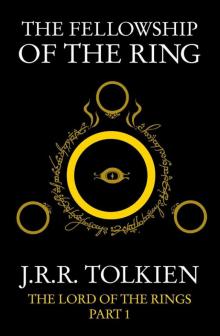 The Fellowship of the Ring
The Fellowship of the Ring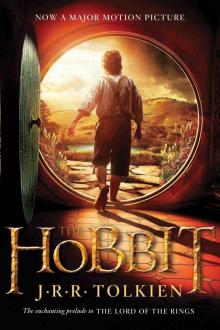 The Hobbit
The Hobbit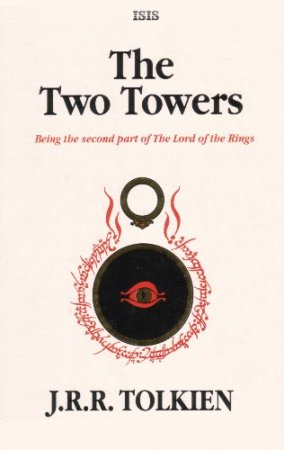 The Two Towers
The Two Towers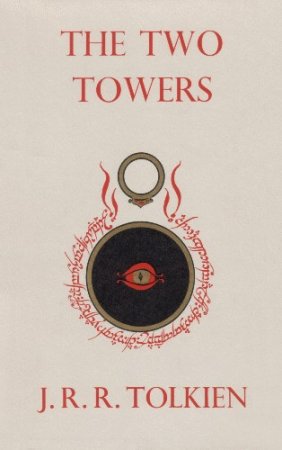 The Return of the King
The Return of the King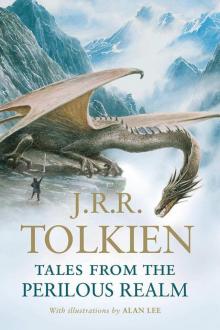 Tales From the Perilous Realm
Tales From the Perilous Realm Leaf by Niggle
Leaf by Niggle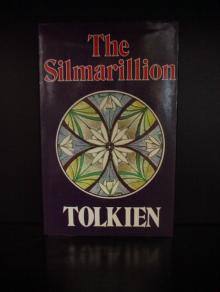 The Silmarillon
The Silmarillon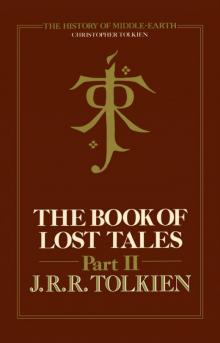 The Book of Lost Tales, Part Two
The Book of Lost Tales, Part Two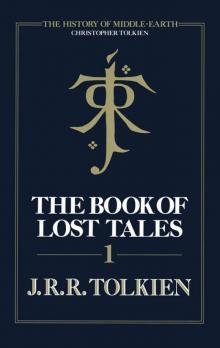 The Book of Lost Tales, Part One
The Book of Lost Tales, Part One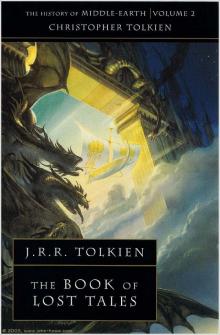 The Book of Lost Tales 2
The Book of Lost Tales 2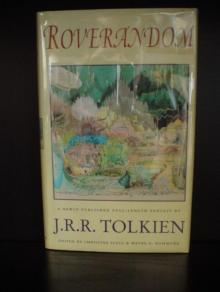 Roverandom
Roverandom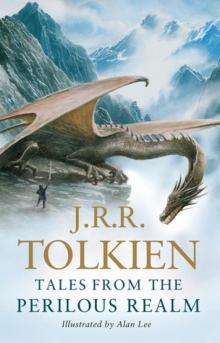 Smith of Wootton Major
Smith of Wootton Major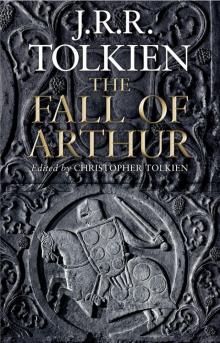 The Fall of Arthur
The Fall of Arthur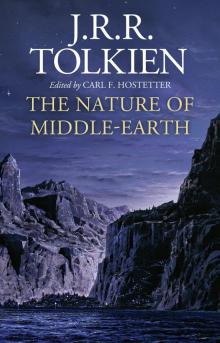 The Nature of Middle-earth
The Nature of Middle-earth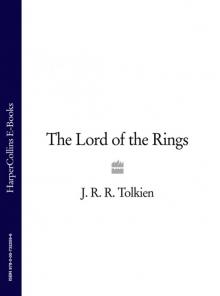 The Lord of the Rings: The Fellowship of the Ring, The Two Towers, The Return of the King
The Lord of the Rings: The Fellowship of the Ring, The Two Towers, The Return of the King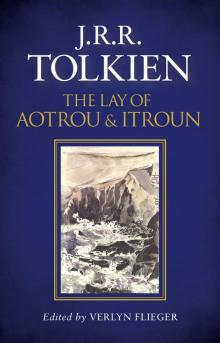 The Lay of Aotrou and Itroun
The Lay of Aotrou and Itroun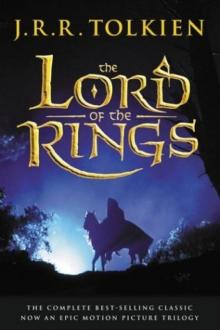 lord_rings.qxd
lord_rings.qxd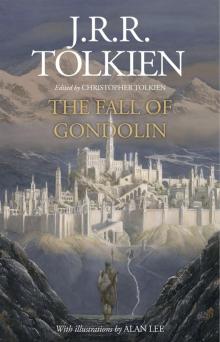 The Fall of Gondolin
The Fall of Gondolin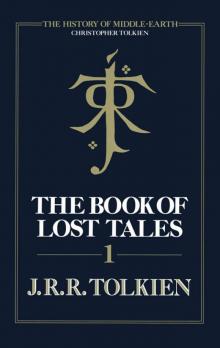 The Book of Lost Tales, Part 1
The Book of Lost Tales, Part 1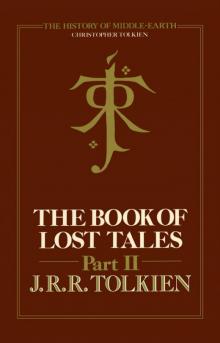 The Book of Lost Tales, Part 2
The Book of Lost Tales, Part 2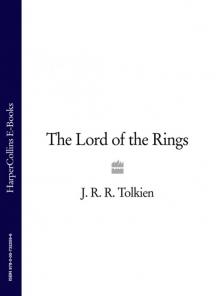 The Lord of the Rings
The Lord of the Rings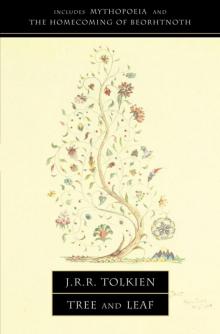 Tree and Leaf
Tree and Leaf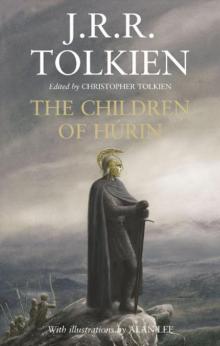 The Children of Húrin
The Children of Húrin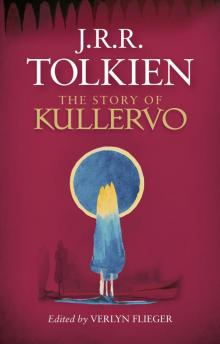 The Story of Kullervo
The Story of Kullervo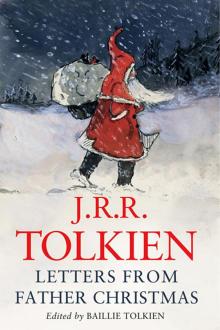 Letters From Father Christmas
Letters From Father Christmas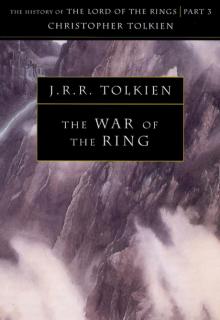 The History of Middle Earth: Volume 8 - The War of the Ring
The History of Middle Earth: Volume 8 - The War of the Ring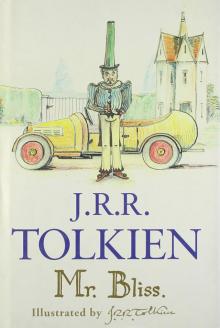 Mr. Bliss
Mr. Bliss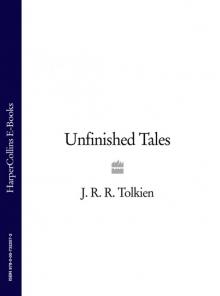 Unfinished Tales
Unfinished Tales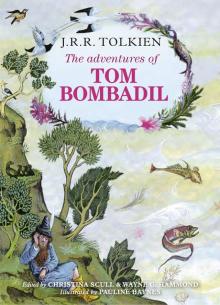 The Adventures of Tom Bombadil
The Adventures of Tom Bombadil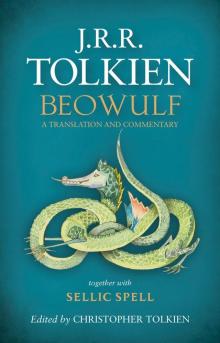 Beowulf: A Translation and Commentary, together with Sellic Spell
Beowulf: A Translation and Commentary, together with Sellic Spell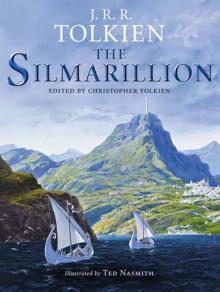 The Silmarillion
The Silmarillion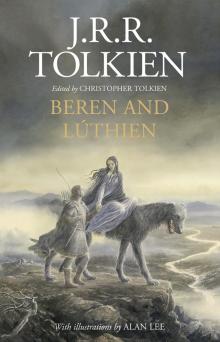 Beren and Lúthien
Beren and Lúthien